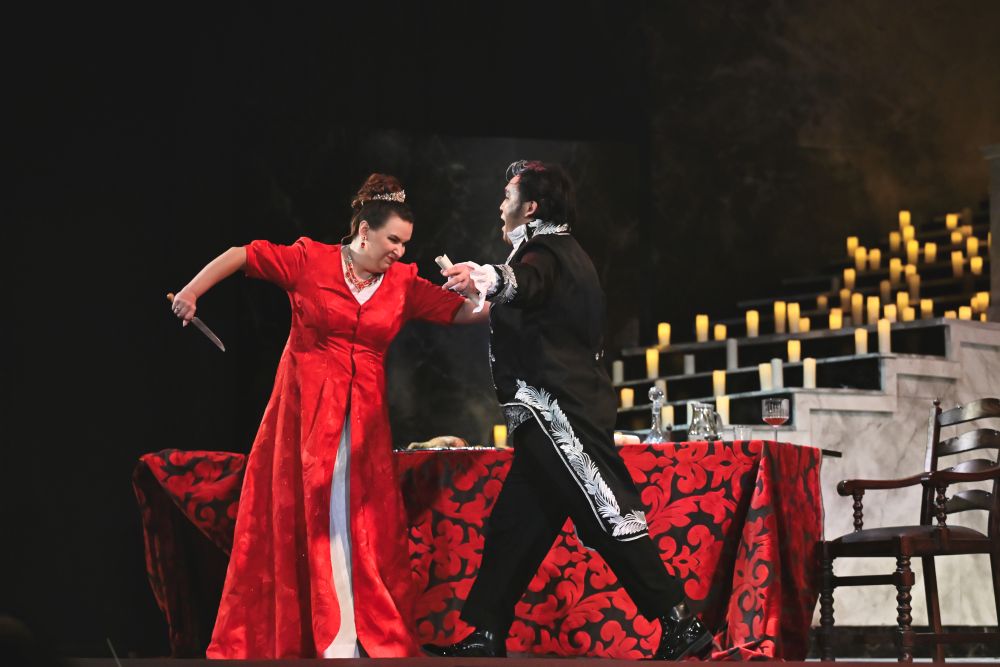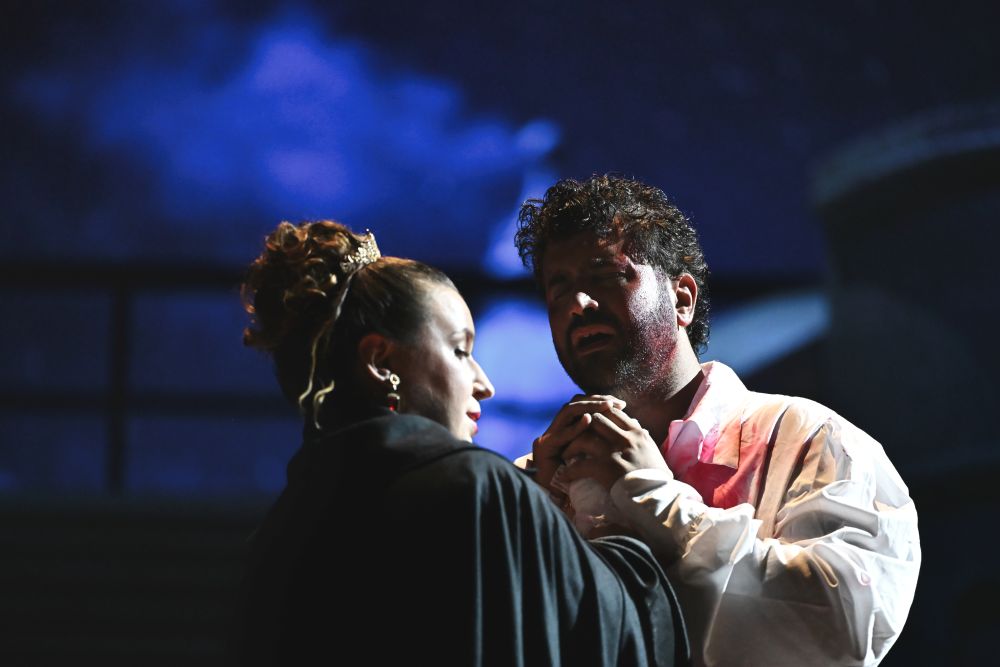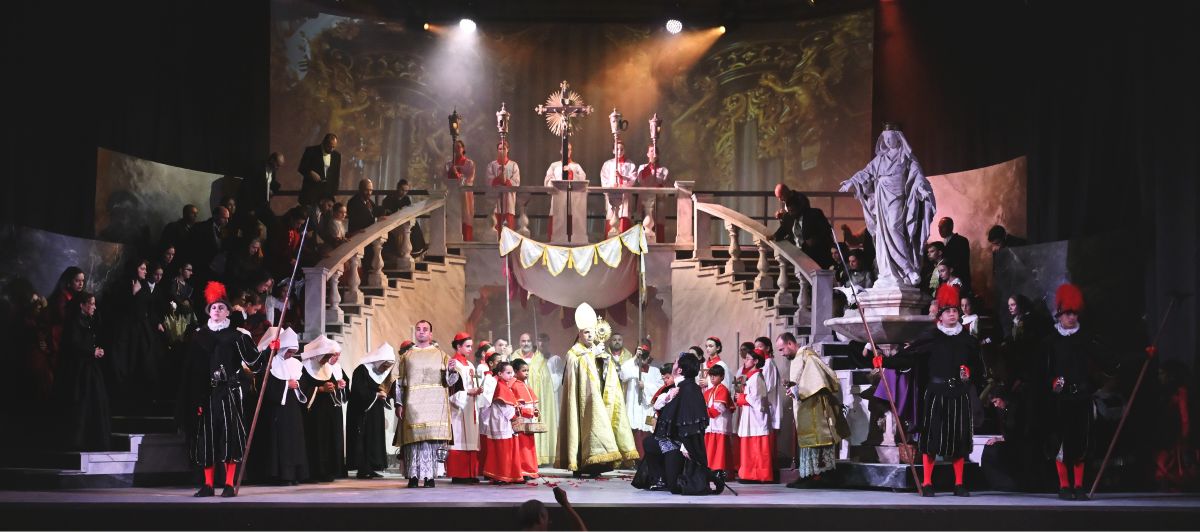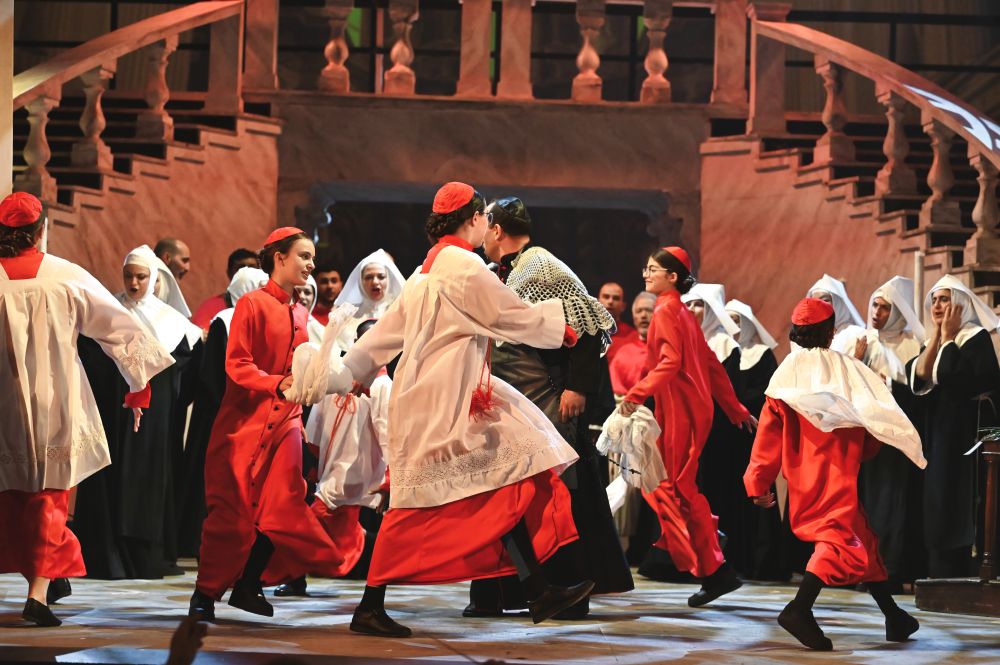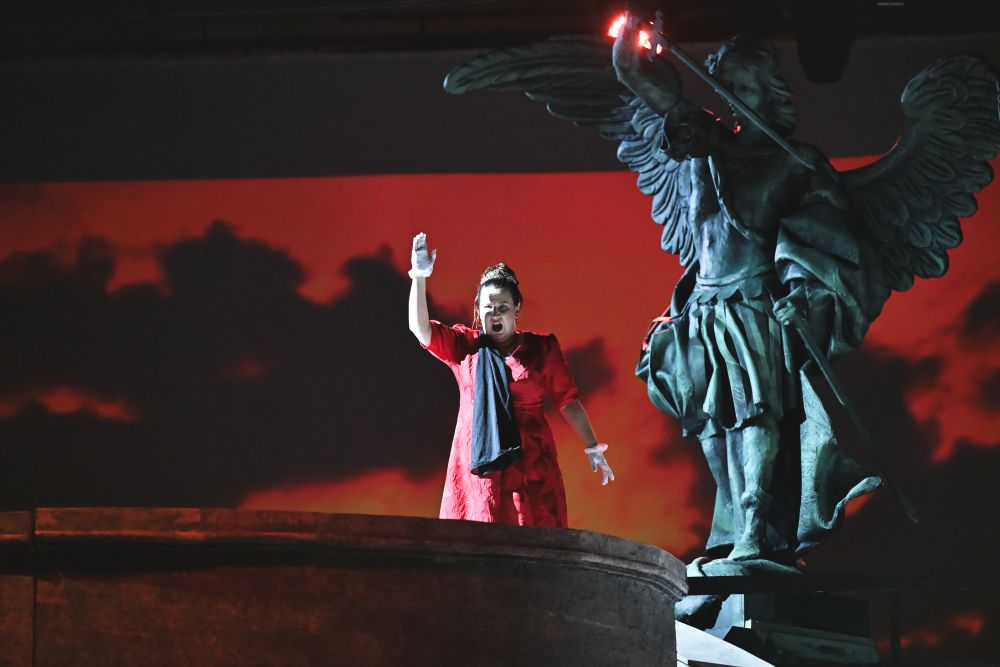Tosca: ill-starred lovers & evil bigotry
26 October 2025
What a smashing production this was! I went to Thursday’s performance of Puccini’s dark masterpiece at the Astra Opera House. This Saturday evening’s replica sees the end of Gozo’s brief operatic experience marking every October.
“Where do I begin?” goes the song. One has to begin somewhere so let one focus on the three main protoagonists of this tragic manifestation of doomed, thwarted love, the arrogance of tyranny and full evil of bigotry and hypocrisy.Such a story as every good story, needs to remain fresh and relevant where ordinary human experience is concerned. In opera one needs the right voices to tackle and interpret roles; good acting is paramount and the music must continue to colour the action, convey the context and follow the music director and stage direction. If/when all this is present the rest could not but be as thrilling as it turned out to be.
The Malta Philharmonic Orchestra (leader Marcelline Agius) was very finely handled by John Galea. His excellent feature in the printed programme explained very clearly the significance of its title: “No Escape from Fate: The Operatic Realism of Tosca”. It makes excellent reading. No wonder John Galea’s direction was so decisive, flowing and exacted every nuance from the score.
The trio of principals were really impressive.All three were superb acting-singers and on top form all the way. Serbian soprano Marija Jelić is as beautiful as her great voice. She was the ideal Tosca: warm, passionate, very brave and tender a woman who suffered for her lover even to the point of committing murder in order to save him. Her tenderness, occasional weakness and sincere faith all came forth in her interaction with Mario and Scarpia. Her most poignant moment was in Vissi d’arte, one of the finest I have ever heard.
An Italian from Puglia, tenor Dario di Vietri was the classic tall, dark and handsome hero. The original story has him having studied in France in the 1790s where he imbibed the radicalism of the Revolution. He sincerely loves Tosca, puts up with her jealous tantrums. He had a couple of great duets with her in Acts 1 and 3.
He sang beautifully his two arias, one a tribute to the beauty of the arts and Tosca. The other a nostalgic reflection at first then a soul-wrenching cry of despair at his imminent execution. Never was despair so clearly defined through such beautiful music.
Mario’s helping the fugitive Angelotti because of shared ideals, brought about his arrest, part of a chain of events which led to his destruction and that of Tosca and Scarpia.
The latter was even more peeved by Mario’s defiance despite the torture he underwent. One wonders whether Mario would have sung his Vittoria!!! at the news of Bonaparte victory at Marengo had he known that a few years laterv his hero would proclaim himself Emperor of the French!
The baritone from Outer Mongolia, Badral Chiluunbaatar was the sinister Baron Scarpia. As a mere baron, he was low in the aristocratic pecking order of his Sicilian homeland. Bad enough being a bigot he is also a sexual predator and perverted sadist. He feigned scandal because choristers in Act 1 danced a merry reel in church to (mistakenly) celebrate the defeat of Napoleon at Marengo. Yet he lusts after Tosca who had left the stage before the grand Te Deum conclusion in which he declares that “Tosca made him forget God” .
Very often singers cast for this role tend to be rather middle-aged and even portly but Badral Chuluunbaatar was more like someone in his late 30s, slim and sinewy and ergo even more sinister. He was so good at being bad!!!
Secondary roles were very well-interpreted beginning with bass Noel Galea as Angelotti, whose escape from Castel Sant’Angelo sets off the chain of events leading to his and the leading trio’s destruction. Baritone Louis Andrew Cassar was the opera’s only comic relief as the quirky, grumbling and muttering sacristan. Before the Te Deum he was utterly terrified by Scarpia and his henchmen.
The latter were tenor Lorenzo Papasodero as Spoletta, hardly looking as sinister as he should. Baritone Ivan Vella looked the part very well with a constantly sober mien. The brief jailer’s role in Act 3 was taken by the ominously named bass Alessandro della Morte. Boy soprano Jamie Portelli sang the authentic shepherd’s folk song which Puccini had heard outside Rome.
The staging and well-handled crowd scene especially in Act 1 were remarkable. The vastly experienced artistic director Enrico Stinchelli carried off the production with great credit. There were two slight departures from the norm. Rather than from behind closed doors, in Act 2 Mario is tortured in almost full view. Probably meant to horrify onlookers, given human voyeuristic weaknesses. Others would opine that listening to screams of pain coming from behind closed is more effectively spine-chilling.
It was also unusual for a shepherd boy not to sing off-stage and be present on the very spot where Mario was to be shot, at that early hour in the fortress prison. The boy moved away long before the “fake” execution which proved to be deadly.
Very unusual and well-thought out was the stage design. In Tosca the action takes place in three different locations. Here there was a basic framework which remained as the base of all three sites. Act 1 is set in the church of Sant’Andrea della Valle with a backdrop of the church’s interior. A few changes transformed the scene to Scarpia’s study in Palazzo Farnese. The same strategy was used to transform the scene to Castel Sant’Angelo.
Teateu Astra’s Opera Chorus in collaboration with the Coro Lirico Siciliano were coached by Chorus Master and repetiteur Francis Camilleri.
Michael Cauchi was Stage Manager while Joseph Cauchi was scenographer. The very beautiful costume designs were Matteo Capobianco’s with costumes entrusted to Miriam Attard and George Camilleri. Props manager George Camilleri, Lights by George Zammit and Juan Vella, projections by
MAV Multimedia. Asst. Ditectors were Andrela Bizimoska and Maria Serena Farinelli.
Production Assistant George P. Cassar, Stage Operations Antonella Zammit.
Since opera began at the Astra in 1978, Tosca was only put on just once before, in October 2005. This year’s production was dedicated to Anton Zammit (1938-2025), in gratitude for his devoted service and steadfast support which greatly enriched La Stella Philharmonic Society and Teatru Astra.
Albert George Storace
(Photos: Hush Studios)
